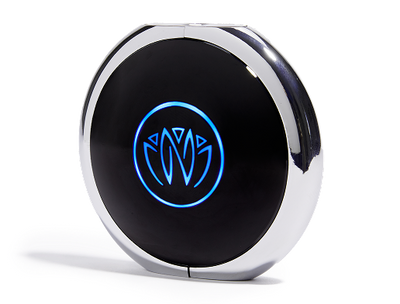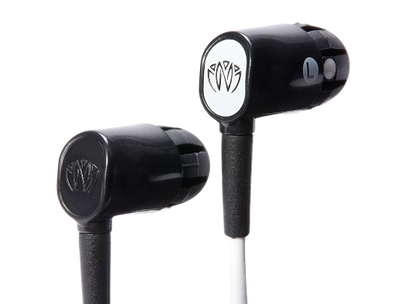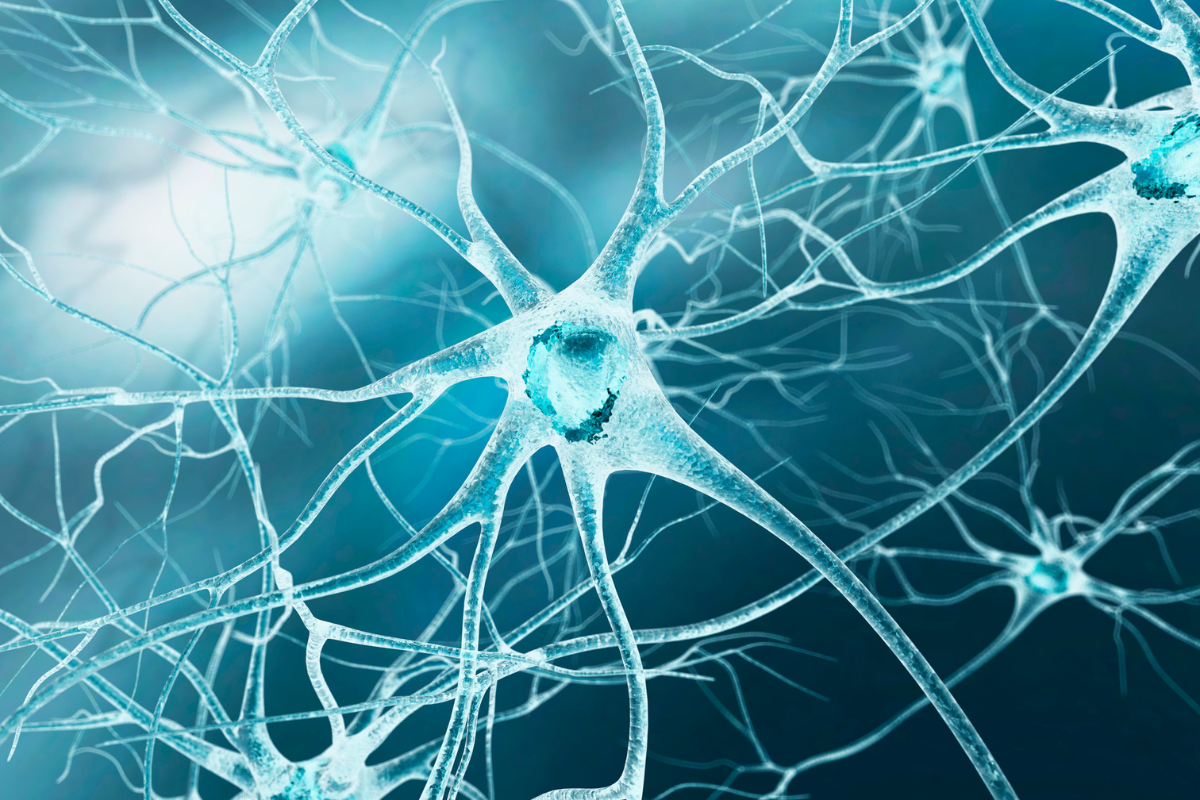The link between your vagus nerve and your heart health could be a lot stronger than you realize. However, the evidence is also strong that vagus nerve stimulation can positively affect cardiac health for many people! These are two concepts we will explore in today's article, including the relationship between the vagus nerve and blood pressure, heart rate variability, and much more.
The Anatomy of the Vagus Nerve
First, let's look at the anatomy of the vagus nerve. This cranial nerve is the longest of the twelve and runs through your neck and chest, connecting your brain to many organs in your body, including your heart. Its primary purpose is to regulate our autonomic functions, such as respiration, digestion, and heart rate. We will get into these autonomic functions in greater detail next, but let us first dive deeper into the vagus nerve's anatomy and its role in our nervous system.
The vagus nerve has two branches, the right and left vagus nerves. Each branch is responsible for part of your autonomic nervous system, carrying information from these organs to the brain and vice versa.
For example, when you feel stress or excitement, the nerve will send signals that activate our body's 'fight or flight' response. On the other hand, when we are in a relaxed state, this same nerve sends signals to trigger the body's rest and digest mode.
Beginning at the base of the skull, the vagus nerve extends all the way down to your abdomen, connecting nearly every organ along its path. This connection between our organs and brain is how we maintain homeostasis and regulate our body's natural functions such as heart rate, digestion, respiration, and much more. In addition, the nerve carries both afferent (sensory) and efferent (motor) information, allowing it to affect our body's autonomic functions.
Afferent vs. efferent neurons
Let's look more closely at afferent and efferent neurons.
The vagus nerve is composed of both afferent and efferent neurons, which can be thought of as the "input" and "output" lines of communication between our organs and brain.
Afferent neurons carry information from the body to the brain, such as sensation or temperature changes. Efferent neurons carry signals from the brain to other body parts, like muscle contractions or reflexive responses. Sending these electrical impulses through its branches allows you to control your autonomic functions such as heart rate, respiration, digestion, and even temperature!
Other than the vagus nerve, afferent and efferent neurons also play a role in other nerves and systems. For example, our sensory neurons allow us to feel pain, while motor neurons help us control our movements. Anytime these signals are disrupted or damaged in some way, it can lead to issues in our nervous system and overall health.
Parasympathetic vs. Sympathetic Nervous System
It's also worth looking at the parasympathetic nervous system (PNS) and the sympathetic nervous system (SNS) and their vital roles.
The PNS regulates our body's automatic functions, allowing us to rest and digest. This "resting" state allows us to conserve energy when we are not in an emergency. On the other hand, the SNS is activated when there is a need for increased heart rate and respiration, such as during times of stress. For example, if you're actively facing a threat, the SNS kicks in and releases adrenaline to help you fight or flee.
As much as this response can prove helpful when we end up in a constant state of fight or flight mode, it can lead to a variety of negative health effects. This is where vagus nerve stimulation comes in, as it helps balance the activity between these two branches.
Potential Benefits of Vagus Nerve Stimulation
Non-invasive vagus nerve stimulation (VNS) delivers electrical impulses through (or under) the skin and into the nerve itself. These electrical signals help strengthen the connection between our conscious and unconscious processes, allowing us to manage our body's autonomic functions better.
Some invasive methods for VNS include surgical implantation of a pacemaker-like device under the skin in the chest. For those with serious medical conditions like epilepsy, this may be a useful and reasonable approach.
Nevertheless, there are also less-invasive options for vagus nerve stimulation that can prove incredibly effective for other people. This includes using a vagus nerve stimulation device like Xen by Neuvana.
These vagus nerve-stimulating headphones can target the nerve through your ear with a process known as transcutaneous vagus nerve stimulation or tVNS. Along with the headphones, Xen includes a handheld device that syncs with your smartphone. You can use a dedicated app to control your VNS sessions from your phone. This includes the intensity, duration, and frequency of each session.
Other non-invasive options (which we'll explore further later on in this article) include cold exposure, mindfulness, and yoga.
Some of the potential health benefits of VNS include improved mood, stress relief, reduced inflammation, enhanced memory and focus, increased energy levels, better sleep quality, and digestion concerns. And, of course, the potential benefit you came here to learn more about today: cardiovascular health.
Cardiovascular Health and the Potential Benefits of Non-Invasive Vagus Nerve Stimulation
So, how exactly does vagus nerve stimulation work to benefit our cardiovascular health? As we've discussed, the vagus nerve is the longest and most important of our cranial nerves, connecting our brain to multiple organs in our body. It helps control a variety of functions, including those related to cardiovascular health.
VNS works by stimulating the parasympathetic nervous system by sending electrical impulses through its branches. This helps balance two primary divisions of the autonomic nervous system – the PNS and SNS – which can help increase heart rate variability (HRV), blood pressure levels, and other cardiovascular benefits we'll get to in a minute.
Animal Research on VNS and Cardiovascular Health
Although the following studies were done on animals, this is often the beginning stage of research into a potential therapy. We can learn more about the potency and effects of any given intervention through animal studies.
Here are a few examples of particularly promising studies that have been done in this area:
Study #1: ventricular systolic function
This particular 2013 study was done on canines, but its findings were intriguing and promising nonetheless:
"VNS therapy improves left ventricular systolic function, prevents progressive left ventricular enlargement, and improves heart failure biomarkers when compared to controls. However, it was found that VNS must be applied chronically to be effective, in their study, for 6 months. When VNS treatment was terminated after 3 months, heart failure severity returned to baseline (Hamann et al. 2013)."
"In canines with HF, long-term, open-looped low levels of VNS therapy improves LV systolic function, prevents progressive LV enlargement, and improves biomarkers of HF when compared with control animals that did not receive therapy."
This pointed to the potential benefits of long-term VNS therapy for human heart failure patients.
Study #2: VNS and resuscitation
In a 2018 study done on rats, VNS was found to improve outcomes in resuscitation significantly.
The study concluded:
"Preclinical studies have been undertaken to assess whether VNS could be used to facilitate resuscitation attempts in rats with induced cardiac arrest (Sun et al. 2018). It was found that when VNS was used in conjunction with CPR in rodents, success rates for return of spontaneous circulation (ROSC) were 90.91% when compared to CPR alone at 83.33% (Sun et al. 2018). Results also indicated that VNS reduced the duration of CPR by preventing arrhythmias independent of the heart slowing mechanism expected in VNS (Sun et al. 2018). In addition to its effect on CPR, VNS also reduced the number of electrical shocks required to achieve ROSC (Sun et al. 2018)."
This research further highlighted how VNS might help support human cardiovascular health, particularly during times of extreme stress or trauma.
Study #3: low-level VNS, MIs, and VAs
Another study done on dogs took place in 2020 that looked at the effects of low-level vagus nerve stimulation (LLVNS) on acute myocardial infarction (MI). Because this is a leading cause of death for humans, the study had significant implications for VNS therapy.
Its findings suggest that when low-level VNS was delivered to canine subjects without altering their heart rate, it contributes to:
"Reduced incidences of VAs and improved left ventricular function. The potential mechanisms included suppressing cardiac neuronal sprouting, inhibiting excessive sympathetic nerve sprouting and subduing pro-inflammatory responses by regulating gene expressions from a canine experimental study."
VAs refers to ventricular arrhythmias, which are abnormal heart rhythms that can cause palpitations and other discomforts.
Human Research on VNS and Cardiovascular Health
Next, let's take a look at some of the human clinical studies that have been done to further evaluate the effects of VNS on cardiovascular health.
Study #1: cardiac electric stability
This 2020 study aimed to explore the benefits of long-term VNS on heart rate variability (HRV) and heart rate turbulence (HRT) heart failure with reduced ejection fraction (HFrEF) and reduced T-wave alternans (TWA), among other cardiac dysfunctions.
It concludes:
"In symptomatic patients with HFrEF, chronic VNS appears to confer wide-ranging, persistent improvements in autonomic tone (HRV), baroreceptor sensitivity (HRT), and cardiac electrical stability (TWA, RWH, TWH)."
Study #2: VNS and heart failure
Another study outlined in the European Heart Journal explains some results from a small pilot study on VNS and heart failure:
"There have been two previous reports of the use of VNS in patients with heart failure. A single-centre pilot study of eight patients with severe heart failure [seven in New York Heart Association (NYHA) class III] showed that right-sided VNS with the Cardiofit system (BioControl Medical, Yehud, Israel), synchronized at 70 ms after the R wave with a duty cycle of no more than 25%, was safe and tolerable."
What Do These Results Mean?
You may need to be a cardiologist to understand the full implications of these studies. In short, they suggest that VNS could be beneficial for people with specific cardiovascular issues, like heart failure and ventricular arrhythmia. It also appears to help in resuscitation efforts and reduce the impacts of acute myocardial infarctions.
While these are serious medical conditions that could call for serious and invasive treatments, there are also, as we mentioned, many non-invasive ways to stimulate the vagus nerve if you want to reap other wellness rewards.
Other Methods and Benefits of Non-Invasive Vagus Nerve Stimulation
One method we've already covered is tVNS with the help of Xen by Neuvana. This is a practical, non-invasive way to boost your vagal tone, thereby providing better cardiovascular support.
But you can also do other external VNS methods at home, like yoga or deep breathing exercises. Both of these activities involve slow, deep breaths that stimulate the regulation and balance of the autonomic nervous system, including the sympathetic (fight-or-flight) and parasympathetic (rest-and-digest) systems.
Doing these activities regularly can naturally strengthen your vagus nerve over time, helping it become more resilient and responsive when confronted with stressors–ultimately supporting better cardiovascular health.
Along with potential cardiovascular improvements, there are many other reasons to consider trying non-invasive VNS. Some other potential benefits include improved sleep, reduced anxiety, and improved gastrointestinal function. And with so many potential rewards to reap, it's worth exploring for yourself if the vagus nerve could be a helpful ally in your overall health journey.
What's more, it's important to keep in mind there is still much research to be done on non-invasive VNS and its effects on cardiovascular health. But with such promising preliminary results from animal and human studies, we can look forward to further understanding this fascinating topic in the years ahead.
VNS: FAQs
With such an exciting and complicated topic, it can be hard to know where to start. To help you out, here are some of the most common questions about the vagus nerve, vagus nerve stimulation, and its potential benefits.
What are the side effects of VNS?
The most common side effect of VNS is a slight feeling of discomfort when the stimulation begins. Other less common side effects include coughing, sore throat, nausea, headache, and dizziness. Please consult your doctor immediately if you experience any adverse reactions or worsening symptoms after using VNS. With non-invasive VNS, however, side effects are rare.
How long does VNS treatment last?
This depends on the type of VNS treatment you are receiving. For example, with Xen by Neuvana headphones, you can choose the length and frequency of your sessions (for example, half an hour every day). For other non-invasive measures, like cold exposure or meditation, just a few minutes a day might be a perfect place to start.
How often should I do VNS treatment?
Again, this comes down to the type of VNS you're doing as well as your goals for it. In most cases, implementing VNS practices on at least a daily basis will help you see results best.
What are the contraindications of VNS?
Surgical VNS is something that will be discussed at great length with your medical team, and they will cover any contraindications. For example, VNS is not recommended if you have a pacemaker or an implanted defibrillator. With non-invasive VNS, however, it is generally safe for anyone to do as long as there are no underlying medical issues present.
What does vagus nerve stimulation feel like?
If you are about to start a session of VNS, you may experience some tingling or buzzing sensations on your skin as the stimulation begins. For example, when using Xen by Neuvana headphones, this sensation is generally felt in your ears. But if you're doing something like yoga or meditation, you likely won't feel anything specifically on the nerve itself. Instead, you might feel benefits from these practices as a result of the stimulation.
Can I do VNS at home?
Yes, there are several ways to stimulate your vagus nerve from the comfort of your home. Cold exposure, yoga, and meditation are just some of the methods that can be done safely and naturally. And for those looking for more technical approaches, companies like Neuvana offer products like Xen headphones that allow you to conveniently get started with non-invasive VNS right away.
Final Thoughts
Whether you're hoping to improve your heart health or experience other potential benefits of VNS, there are plenty of reasons to be excited about the possibilities! By exploring the topic further and engaging in a variety of practices, you can start to uncover all the ways this fascinating nerve could help you reach your health goals.
Remember to explore Xen by Neuvana if you'd like an easy and convenient way to get started with non-invasive VNS. With Xen, you'll be able to adjust the session length and frequency, so it's tailored perfectly to your needs.
We hope these FAQs, research on VNS, and related topics have helped clear up some of the questions you may have had about vagus nerve stimulation, and we wish you luck on your journey toward a healthier heart!





